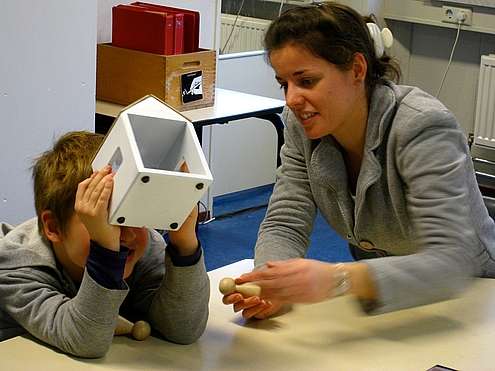Researcher defines five-step approach to designing for children with autism

If designers want to develop effective products for children with autism, they first need to immerse themselves in the group they are targeting. This is the claim made by Helma van Rijn, who will be awarded her PhD for her thesis on this subject at TU Delft on Tuesday 18 September.
Rain Man
'Just like anyone else, children with autism need products and services that suit their specific requirements and experiences', says industrial design engineer Helma van Rijn. 'But what do you do if you are commissioned to make a product for these children, for example, educational toys, but have no experience of autism whatsoever? Perhaps you would start by searching the internet for more information, watching the film 'Rain Man' or reading a book that explains how children with autism behave. You will then discover that the way in which children with autism really think and behave is left to your imagination. You find out that the only way of gaining a closer understanding of the needs and experiences of these children is through direct contact with the children or with those who care for them and treat them.'
Confrontational
Van Rijn's PhD research involved investigating how designers can have meaningful meetings with these children and their carers in order to gain information and inspiration for the design process. She did this by 'confronting' students of Industrial Design Engineering at TU Delft with a group of seriously autistic children on several occasions.
'It can be a little frightening, especially at the start', says Van Rijn. 'I remember my first meeting as a designer with an autistic child very well. Suddenly, a boy from the group climbed onto my lap. It felt as if he was not seeing me as a person, but rather as a type of bench that he could sit on. After a while, he started touching my head and hair, pushing his nose against mine and looking into my eyes. Although it was a special experience, it was also quite uncomfortable. Initially, I had no idea how I should respond. But you soon get used to dealing with these children.'
Five steps
The research conducted by Helma van Rijn demonstrates the need for designers to familiarise themselves with the new environment, to observe people casually, with no explicit aim, and to consciously try to identify occasions when people accord a different significance to objects and interactions than they do themselves. 'You cannot achieve this as a designer just be reading the literature. You need to immerse yourself in the group that you are targeting.'
Van Rijn believes that her conclusion could also apply to other difficult-to-reach groups, such as elderly people with dementia.
Her thesis describes a five-step framework. This framework involves five main activities (familiarisation, observation, reflection, theorisation and try-out) and transitions (exploring, immersing, connecting, releasing and applying). It describes and prescribes how designers can learn from their encounters.
More information: Meaningful Encounters: Explorative studies about designers learning from children with autism in the TU Delft Repository: repository.tudelft.nl/view/ir/uuid%3A978fbd25-eb26-4306-bebc-5e2770538c5a/
















